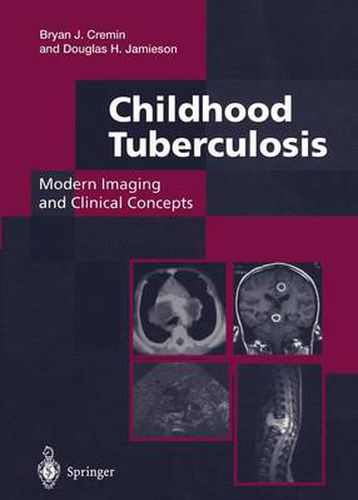Readings Newsletter
Become a Readings Member to make your shopping experience even easier.
Sign in or sign up for free!
You’re not far away from qualifying for FREE standard shipping within Australia
You’ve qualified for FREE standard shipping within Australia
The cart is loading…






In 1967 Dr Bryan Cremin arrived in South Africa to head the Department of Diagnostic Radiology at the Red Cross Children’s Hospital, and became the first specialist paediatric ra- diologist on the faculty ofthe UniversityofCape Town. Now, in 1994, Professor Cremin is in- ternationally recognised, and, just before his retirement, has, with the support of his colleagues, summarised his 27 years ofexperience oftuberculosis in southern Africa. Tuberculosis is an extraordinary infection - ancient, gaining a sinister reputation and at times occurring in disastrous epidemics. By affecting both princes and poets, children and the aged, it has altered the course ofhistory. But, the effects aside, the methods which have been used to treat tuberculosis over the centuries are as remarkable as any in the folklore of medicine. Even in the relatively short period in which radiography has been available, treat- ment has been, by today’s standards, somewhat unusual. For example, it was deemed impor- tant to rest the diseased lung and to collapse any tuberculous cavity. Lacking CT-, MRI- or ultra-sound techniques, radiologists were nevertheless expert at recognising wax or dental compound which had been blindly injected into a cavity, and in distinguishing ping-pong balls in the pleural space from a pneumothorax with adhesions.
$9.00 standard shipping within Australia
FREE standard shipping within Australia for orders over $100.00
Express & International shipping calculated at checkout
In 1967 Dr Bryan Cremin arrived in South Africa to head the Department of Diagnostic Radiology at the Red Cross Children’s Hospital, and became the first specialist paediatric ra- diologist on the faculty ofthe UniversityofCape Town. Now, in 1994, Professor Cremin is in- ternationally recognised, and, just before his retirement, has, with the support of his colleagues, summarised his 27 years ofexperience oftuberculosis in southern Africa. Tuberculosis is an extraordinary infection - ancient, gaining a sinister reputation and at times occurring in disastrous epidemics. By affecting both princes and poets, children and the aged, it has altered the course ofhistory. But, the effects aside, the methods which have been used to treat tuberculosis over the centuries are as remarkable as any in the folklore of medicine. Even in the relatively short period in which radiography has been available, treat- ment has been, by today’s standards, somewhat unusual. For example, it was deemed impor- tant to rest the diseased lung and to collapse any tuberculous cavity. Lacking CT-, MRI- or ultra-sound techniques, radiologists were nevertheless expert at recognising wax or dental compound which had been blindly injected into a cavity, and in distinguishing ping-pong balls in the pleural space from a pneumothorax with adhesions.